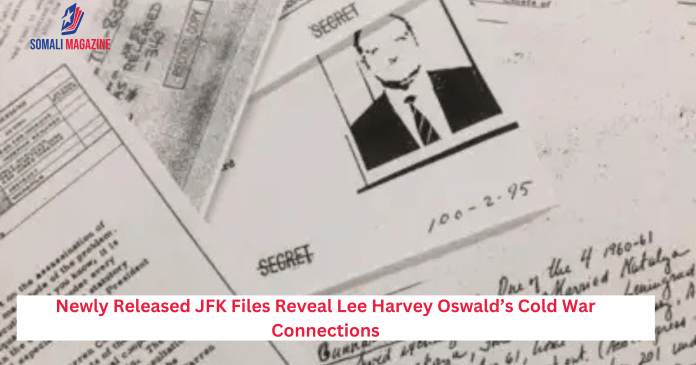Facebook Twitter Instagram Somali Magazine - People's Magazine
Thousands of previously classified documents reveal new details about Lee Harvey Oswald’s movements and intelligence operations during the Cold War
Thousands of previously classified documents related to the assassination of President John F. Kennedy have been released by the U.S. National Archives and Records Administration. The release was ordered by former President Donald Trump, making more than 1,100 files—consisting of over 31,000 pages—publicly available. These files were posted on the National Archives website, adding to the vast collection of over 6 million pages of records, photographs, motion pictures, sound recordings, and artifacts related to Kennedy’s assassination.
According to Larry J. Sabato, director of the University of Virginia Center for Politics and author of The Kennedy Half-Century, the newly released files will take time to analyze fully. “We have a lot of work to do for a long time to come, and people just have to accept that,” Sabato stated.
Trump initially announced the release during a visit to the John F. Kennedy Center for the Performing Arts in Washington. He mentioned that his administration was making about 80,000 pages of documents available to the public. However, some files were still withheld due to potential national security concerns. The National Archives confirmed that the release would include all previously classified records.
Researchers estimate that around 3,000 files had not been made public before, either in whole or in part. Additionally, the FBI recently found about 2,400 more records related to the assassination. These new releases have reignited interest in one of the most talked-about events in American history.
Kennedy was assassinated on November 22, 1963, while traveling through downtown Dallas in a motorcade. As his car passed through Dealey Plaza, shots were fired from the Texas School Book Depository building. Kennedy was fatally wounded, and the limousine carrying him raced to the hospital, but he was pronounced dead shortly after.
Police arrested 24-year-old Lee Harvey Oswald, a former Marine, as the suspected assassin. Oswald had positioned himself on the sixth floor of the Texas School Book Depository. However, just two days later, nightclub owner Jack Ruby shot and killed Oswald during a jail transfer, sparking numerous conspiracy theories that persist to this day.
Following the assassination, President Lyndon B. Johnson established the Warren Commission to investigate the killing. The commission concluded that Oswald acted alone and that there was no evidence of a larger conspiracy. Despite this, many alternative theories have circulated over the decades, with some suggesting that other individuals or organizations were involved.

Oswald’s background has long been a subject of intrigue. He defected to the Soviet Union for a time before returning to Texas. Documents from previous government releases have revealed intelligence reports detailing his activities, including visits to Soviet and Cuban embassies in Mexico City just weeks before the assassination.
One CIA memo describes how Oswald called the Soviet Embassy in Mexico City seeking a visa to travel to the Soviet Union. He also visited the Cuban Embassy, apparently hoping to get a travel visa that would allow him to enter Cuba while waiting for a Soviet visa. On October 3, about six weeks before the assassination, he reentered the U.S. through a Texas border crossing.
Another memo, dated November 23, 1963—the day after Kennedy’s assassination—mentions an intercepted phone call in Mexico City. According to the report, Oswald had spoken with a KGB officer at the Soviet Embassy that September.
The release of these documents has provided additional insight into Cold War intelligence operations. While experts do not expect any groundbreaking revelations from the new files, the information could still help paint a clearer picture of the events leading up to the assassination.
Despite decades of research, Kennedy’s assassination remains one of the most debated events in American history. The newly released documents may not change the official story, but they continue to fuel public interest in one of the nation’s most enduring mysteries.

